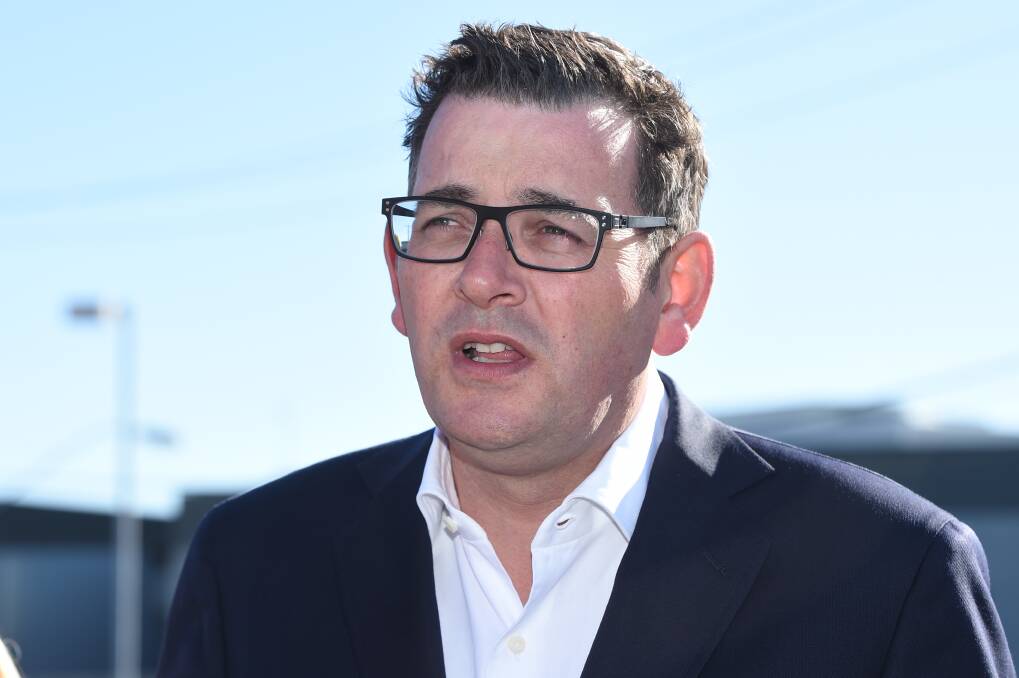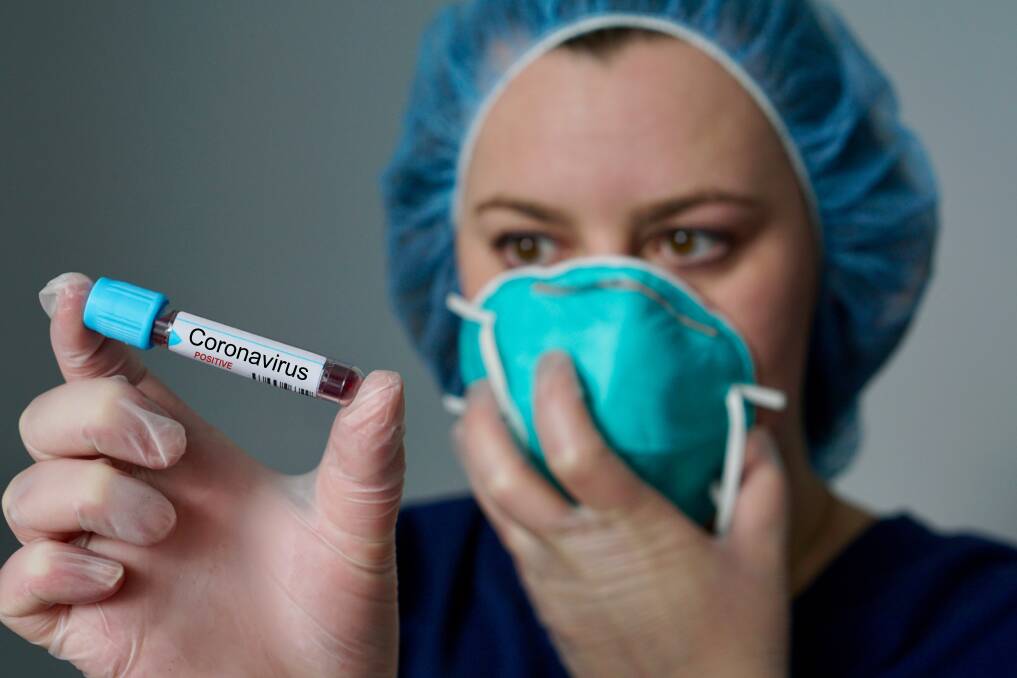
Premier Daniel Andrews says Victoria is 'ahead of time' to achieving a COVID-normal Christmas as Melbourne's restrictions will ease from tonight.
Subscribe now for unlimited access.
$0/
(min cost $0)
or signup to continue reading
Melbourne will advance to the 'second step' of the roadmap to recovery from 11.59pm on Sunday - a week earlier than planned.
"This strategy is more than working - we're ahead of schedule," Mr Andrews said in his daily press conference.
"That is something we can all be pleased about but doesn't mean this is over."
Mr Andrews foreshadowed that full freedom of movement, Victorians leaving home without needing any reason, could come on October 19.
Melbourne's curfew from 9pm to 5am will be lifted from Monday and about 127,000 workers will return to work - about 30,000 more than originally expected.
All primary school pupils, along with specialist school students, will return to face-to-face learning from October 12. Mr Andrews said it may be a staggered return.
Year 12 students will also be able return to school for assessments from October 3.
A household or up to five people from two households will be able to gather outside, while the limit on one person per household going shopping once a day will also be lifted.
Want to read more local news? CLICK HERE
In hospitals, each patient will be allowed one visitor per day for a maximum of two hours, while for patients that are under the age of 18, two parents or carers can visit without any time limit.
However, exercise limits of two hours per day within 5km will remain in place.
Weddings with a limit of five people, including the marrying couple and two witnesses will also be allowed in outdoor spaces.
Mr Andrews believes the next important step will occur on October 19.
There are now 399 active infections across the state - the first time that number has been less than 400 since June 30.
"It's one measure among many of the amazing performance of the Victorian community - staying apart but sticking together, making sure that we defeat this second wave," Mr Andrews said.
"And that's why I'm not only proud of the Victorian community, I'm deeply grateful to the Victorian community for the amazing work. The sacrifice, the pain that they have endured, and will need to endure for a bit longer."
Earlier on Sunday, Victoria reported just 16 new COVID-19 cases and two deaths taking the state's pandemic death toll to 784 and the national figure to 872.
The easing of lockdown coincides with the dramatic resignation of Jenny Mikakos as health minister on Saturday after the premier told the hotel quarantine inquiry that her department was ultimately responsible for running the botched quarantine system.
The hotel quarantine program failed because private security guards breached infection control, causing the spread of the virus into the community and a devastating second wave.
Ms Mikakos will also be resigning from parliament, with Martin Foley sworn in as her replacement in the health portfolio.
Meanwhile, Ballarat - which advanced to the 'third step' of the roadmap to recovery on September 17, has not had an active infection in more than two weeks.
The city has had 57 confirmed cases since the pandemic began earlier this year.
FULL STATEMENT FROM PREMIER DANIEL ANDREWS
Seven weeks ago, our average case numbers were peaking at more than 400 every single day. Today, Melbourne's rolling case average is 22.1.
It's a remarkable thing - and an achievement that belongs to every single Victorian.
Because with grit and with guts and with heart - we are beating this thing.
We are driving it down.
We are winning.
Thanks to those efforts, and on the advice of our public health team, I can confirm that from 11:59pm tonight, Melbourne will enter the Second Step towards reopening.
I can also confirm, again on the advice of our public health team, that we are further ahead than we'd hoped for.
The latest modelling shows that our strategy is working. Not only have we been able to drive down cases from the hundreds - we're well on-track to hit single digits in the next few weeks.

That allows us to make some small, but significant changes.
Firstly, our move to the Third and Last Steps will no longer be defined by dates in the calendar.
Instead, the "trigger point" for review by our public health team will be based solely on reaching our case number targets. That means the sooner we hit those targets - the sooner we can consider our next steps.
It also means that getting back to the things we love - seeing more of the people we love - not only is achievable, it's in our hands.
Making sure we have enough time to evaluate the impact, movement between steps will be spaced at least three weeks apart.
This, and based on the current projections, means we'll be in a position to consider our next Step by mid-October.
Those same projections have enabled us to make a few small changes to our Second Step too.
Under the existing roadmap, onsite learning for VCE, VCAL and Prep to Grade Two was set to resume onsite learning from October 12.
Because we're slightly ahead of where the modelling had put us - and in good news for many parents - we've been able to expand that to all primary school students.
As always, we'll continue to review the return of remaining year levels on a regular basis.
There are a few other areas where we've been able to go a little bit further to make life a little bit easier.
For example, private inspections can resume for real estate. Weddings can take place with up to five people. Apprentices and uni students in their final year of study will be able to attend onsite for learning and assessment where necessary.
In a really meaningful change for many families, the rules around visiting hospitals and care facilities will also be slightly relaxed.
And because we said we'd lift it the moment we could - and the Chief Health Officer's advice is the success of our current numbers means we can - the curfew will no longer be in place after tonight.
None of these changes though are a sign we can take our foot off the pedal. The fine for gatherings - having visitors over to your home, meeting outdoors in big groups - will be increased to the same penalty for travelling into regional Victoria without a valid reason. That is, almost $5000.
Under the Second Step, we've also been able to make sure more Victorians - 127,000 Victorians - can get back to work.
The workforce limits for some industries will be expanded. Supermarkets and food distribution centres, for example, will return to full capacity. Abattoirs, seafood and meat processing plants will also increase, in line with the levels we know are safe.
At the same time, and recognising the increased risk in some of these environments, there'll be additional obligations for employers, including regular surveillance testing of staff, nightly deep cleaning, separating workers into consistent bubbles, and providing regular training for their workers.
Manufacturing can return with up to 90 per cent of its workforce. Sole traders doing outside gardening and landscaping can return. Retail pet grooming will also resume.
We'll also be able to enact those changes laid out in the existing roadmap.
From 11:59pm tonight, groups of up to five from across a maximum of two households can meet outdoors. Outdoor pools will open, and personal training can resume with a maximum of two people and their trainer.
Childcare centres can reopen, with kinder to open from Term 4 too.
Recognising a number of important upcoming events for many of our religious communities, gatherings of up to five people can meet with their faith leader outdoors.
More of our medical, health and allied professionals will also be able to offer face to face services for non-urgent care.
And of course, reaching the Second Step means we can begin to slowly ramp up elective surgery to 75 per cent of pre-pandemic levels.
With all of these changes, though, comes increased responsibility to keep each other safe.
To get tested when you're sick. To keep your distance when you're out. To follow the rules and listen to the health advice.
It also means continuing to wear a face covering. And with more people moving across our city, our public health team have advised the rules around wearing a mask need to be strengthened.
Victorians will now be required to wear a fitted face mask, covering the nose and mouth. Some of the concessions we made as we adjusted to this new normal - things like wearing a scarf or a bandana or a face shield - will no longer apply.
As I've said before, wearing a face covering is a small sacrifice - but it makes a huge difference in keeping all of us safe. Because fundamentally, that's what all of this comes down to.
None of it's easy. But all of it matters.
And every day, and every Victorian, is getting us that much closer to the other side.
Whether you call it the final quarter, the home stretch, or the last push - we're nearly there.
We've got this.
-with AAP

